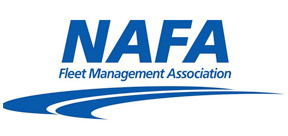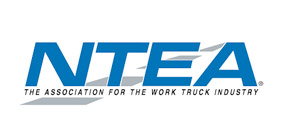Citywide editorial process makes city marketing campaigns more efficient and collaborative

The Tyler, Texas, department of communications has been recognized for its citywide editorial process that assists with marketing campaigns for all city departments. In 2023, the city was awarded a Municipal Excellence Award by the Texas Municipal League. Liaisons were chosen and trained within multiple city departments with design and marketing skill sets to work with the communications department to grow each department’s goals and assets. This helps the city best evaluate where its advertising budget is being spent, as well as what will be most impactful for the city. It also helps to send out information to the public in the most efficient manner without overloading them with information.
Julie Goodgame, director of communications, joined the city of Tyler in 2015, starting out as a public information officer. In this position, she got a firsthand start working with all the departments. At that time, many cities were struggling with a sales tax shortfall, budget cuts and hiring freezes, and, as a public information officer, it was realized the city could not adequately get all the information out for the city and all its departments. The city of Tyler looked at the processes in place and realized they were more reactive than proactive, and while everything needed to be in three days prior for review, there was no coordination with marketing initiatives between departments. The city was missing opportunities for collaboration or storytelling when receiving information just days before it had to be distributed.
Looking back at previous year’s events and requests, a baseline calendar was started and individuals in various city departments with a marketing or design background were trained as a liaison with the communications department. These liaisons were then taught the processes and software of the communications department and how to create assets for campaigns that then go to the communications department for final review. During the first three or four years of implementing the process, the communications department built the framework and worked with and trained departments. The focus of the training is to identify best practices and goals for the highest return on investment. This also helps to manage expectations and miscommunication between departments. Microsoft Teams is used as the planning mechanism and is built with goals and assets. There are now between 30 and 60 different campaigns running each month.
With this collaborative editorial process, the communications team can identify if there is an operational change that will impact the public and have a public information campaign ready to go as opposed to simply sending out a press release three days prior like before.
“The biggest thing it has done is educating the citywide team on what communication looks like and how to practice it,” Goodgame explained. Now that the process has been in place for six or seven years, it is simply part of the city’s culture. “A culture of good communication establishes baselines, adapts quickly and helps to take things to the next level,” she emphasized.
While completely different from the processes in place previously, cooperation with the other city departments has made it a large but manageable effort. It has increased the city’s marketing capacity by 72%. It also helps the public look at the bigger picture with positive messaging that supports the messaging from other departments.
Goodgame stated, “I would definitely describe my personal style as cooperative, so a lot of our internal processes are designed to funnel information with checks and balances.”
It involves discovering what the brand voice is for each campaign and ensuring the content aligns with the brand voice. Working with intelligent, technical individuals in various departments, she also ensures the process breaks down the information, so it makes sense to residents and they understand how it will affect them. It is all about building relationships and managing expectations.
These department liaisons are the key for making this editorial process such a big success. “Some departments have none while other departments have three,” Goodgame shared. “Some departments create 90% of their own collateral so the communications team can be a better help to other departments without that liaison. It allows us to do more and put out more. That is always the thought process — what are you leaving behind? This allows us to produce processes and structure with maximum efficiency. Low input and high impact. Collaboration is so important instead of everyone trying to invent the wheel.”
Each year, the communications department meets with other departments in an editorial meeting to go over last year’s calendar, give a survey, track data from what worked and what did not, and review for the upcoming year. They focus on what the city is spending time and money on as well as what is not best serving the city.
“I’m a big believer in evaluating every year, and if it’s not working, don’t invest more time and energy in it,” Goodgame stressed.
While they do not perform an in-depth analysis on every campaign, there are key events that are tracked. This meeting also allows the communications team to receive the necessary information from other internal departments. For example, this includes working with the information technology or strategic planning department to ensure the communications team’s plans align with the city’s strategic plan. It also helps to ensure the communications team has the budget available for its campaigns. It can also request the necessary budget if not available.
Tyler has now begun to train other cities on its communications efforts and processes. The idea has been pitched at a few conferences and other cities have called and inquired about how the process was started.
Goodgame admitted, “The biggest hurdle is ‘Why?’ How will this make my life easier or better? If you want to change the process, you have to create the program and train people and will have to identify why this will help them.” The goal is to learn how other departments operate to see how processes need to be modified to best fit together.
Next Article: Arlington, Texas, completes improvement project ahead of 2026 World Cup


